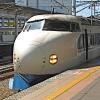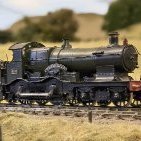All Activity
- Past hour
-
Bien joué ! It's always nice to be able to restore an old model. You know have a working piece of history. Do you have the box still, or you bought it loose? This locomotive is probably 40 years old or more. I definitely recommend acquiring a fiberglass pen. It's my go-to for cleaning wheels and contacts.
-

Asian Manufacturers - Product Announcements
Section31 replied to disturbman's topic in Worldwide Models
Not sure where to put this but apparently tinyhk trains were converted to be runnable trains. Another regional transit system that can be collected. So now motorized MTR train models exist to some extent. Interesting potential ahead -
Thanks disturb for the tips! I don't have a fiberglass pen, but I've made good progress with a peco copper brush. Probably a bit more abrasive than the fiberglass but it's what I had on hand. I disassembled the loco, splitting the two chassis halves. Applying power to the motor directly revealed it is not burnt out! Filled with hope, I set about cleaning all the gears, electrical contacts (especially the metal parts where the bogies sit in the chassis, and wheels. And you know what? I now have a working, not-even-that-badly-damaged EF 65 for 500 yen! I scavenged a rapido coupler off a tomytec motor chassis for a future project, since it'll be used for an EMU, so no need for front coupling. One of the lights still works, so I made sure to orient that towards the front of the loco, opposite the one rapido coupler. Other than that, it looks like there's a tiny edge piece of one pantograph missing, and one "post" on top of the rear cab had snapped off. Of course, it runs a bit rough. I think one of the axles may be slightly bent because there's a kind of rhythmic "chugchugchug" when it moves (despite not being an SL ; ) ). But it can even do (sort of) low speed running. I should have asked the old man at the market for an e-mail ( or fax?!?) to tell him his old loco is back up and running in France alongside german, french, swiss and English locos x).
- Today
-
When you say 9mm or 3/8 what are you referring to? This makes want to invest in a P-Touch which one do you have? That's a great use for the P-Touch I could use it for identifying which locomotives had decoders or not. Theft deterrent is a good use for the machine also. Since you're the only guy running Japanese trains there's no mix up lol untill others start liking Japanese trains also lol. That's another great ideal for using the P-Touch, I never wanted to go back to work so quickly lol.
-
@Kingmeow - There were three charges on the bill but I cannot remember the details. One charge was the Customs Duty. Don't remember the others specifically - some sort of service fees. I had actually purchased the items using Mira's eBay account so the bill went to her - and she paid it as she knew I would be cranky about it! Tony
-
P-Touch 9mm or 3/8" works well with N-Scale. Often I make a TON of my three letter name initials and stick it on the fuel tanks (US locomotives) as I run them at train shows. Used more for identification mix-ups rather than theft deterrent as other modelers may have the same equipment. Now that I'm starting to gather more Japanese equipment there's not much need for that as I'm the only guy running Japanese trains at shows. 🤣🤣🤣 Recently I added a "F" (using P-Touch) underneath the front truck of a newly acquired EF510 as the "1" and "2" to indicate which is forward on the shell is impossible to see with my naked eyes. The "F" on US locomotives is easier to see and 98% of them have safety cabs so you know which is front.
-
@Tony Galiani was any of the listed charges for "Brokerage Fee"? USP and FedEx are known to charge brokerage fee for things coming from Canada into the US and people have learned to use Canada Post -> USPS. I'm stating this wondering if their Modus Operandi are the same for other, distant, countries like Japan. One of the reasons why I stuck with DHL when I order from Plaza (and it exceeds the economy of Japan Post) even though the two of them are a buck or two cheaper.
-
Those are exactly what I'm looking for thank you, I do have a P-Touch at work that I may run a test sample on and see how they come out. Using the P-Touch would never have crossed my mind to use for this application thanks again.
-
You can use wire number labels. Available from Amazon or at Home Depot for the same price. Wire number labels But if you have time to kill and have access to a Brother P-Touch machine you can make your own and cut them out into pieces. I find the (genuine) P-Touch labels stick very well and does not leave behind any adhesive residue when removed even a long time later. Another Japanese innovation. 😁
-
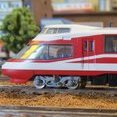
Bill's Excellent Swiss Train & Tram Adventure
bill937ca replied to bill937ca's topic in Travel: Tips, Planning & Memories
In one day I did five SBB train stations in Zurich. The main Zurich HB, Bahnhof Enge, Stadelhofen, Tiefenbrunnen and Wiedikon. Wiedikon is an impressive neighborhood station. It is west of the main core on tram lines 9 and 14. Outside the station is a bus terminal for VBZ and Postalbus lines from outlying communities. In the age of ticket machines the ticket concourse remains viable with a Kkiosk convenience shop and a expresso shop. https://en.wikipedia.org/wiki/Zurich_Wiedikon_railway_station While I was there an intercity train arrived and I saw people arriving with suitcases. As far as I know this is only a S-Bahn station. Perhaps this was a private hire train. I can't imagine that type of train being accommodated at busy Zurich HB. It remained at the platform for quite a while I photographed trams and buses at street level. The glass walled building in the background of the train platform photos is a large tram depot. It covers several blocks and at the top end the city has built cooperative apartments over the tram depot. More later. SBB intercity train in the foreground and a S-Bahn train in the background. The beige building in the background is the section of the tram depot with coop apartments over that section of the tram depot. Before the intercity train arrived from the top end of the station. After this station, the trains go back into tunnels. -

Bill's Excellent Swiss Train & Tram Adventure
bill937ca replied to bill937ca's topic in Travel: Tips, Planning & Memories
Zurich has 29 railway stations. I have never seen a place with so many impressive stations. This Stadelhofen one of the first stations outside of Zurich HB. Lines coming here are running on the east side of finger shaped Lake Zurich. The SBB station is served by 9 SBB S-Bahn lines and two additional peak hour lines. Outside on Stadelhofenplatz are the interurbans of the S18 Forchbahn line and VBZ tram lines 8, 11 and 15. At the far end of the square further VBZ tram lines 2 and 4 running down the east side of the lake to Tiefenbrunnen. The major Bellevue tram hub is only about 4 blocks away. Like many SBB stations and VBZ tram hubs, Stadelhofen Station has a modern and attractive travel centers where tickets and passes can be purchased. The overhead signs indicate what a busy place this is. Along with many stations another trait of Zurich train lines is lots of tunnels. https://en.wikipedia.org/wiki/Zurich_Stadelhofen_railway_station -

Bill's Excellent Swiss Train & Tram Adventure
bill937ca replied to bill937ca's topic in Travel: Tips, Planning & Memories
There's the cafe right out on the concourse on the left of the photo and the end of one of tracks on the right. The stuff dreams are made of!!!! -

Bill's Excellent Swiss Train & Tram Adventure
bill937ca replied to bill937ca's topic in Travel: Tips, Planning & Memories
-

Bill's Excellent Swiss Train & Tram Adventure
bill937ca replied to bill937ca's topic in Travel: Tips, Planning & Memories
I came across SBB RABe 501 High Speed train at Zurich HB. The RABe 501 is another Stadler product with 117 first class seats and 286 second class seats for a total of 403 passengers in an eleven car train. As of December 2020, Giruno units operate services from Basel and Zürich to Chiasso and Lugano. Services between Zurich and Milan have also operated since 12 August 2020, and have later expanded to Venice, Genoa and Bologna.[24] https://en.wikipedia.org/wiki/SBB_RABe_501 Both photos were taken at Zurich HB. -
Does anyone have a source for stickers that I can use on my commuter cars?
-
This is mighty old 😮 But the usual practice should apply. First remove the shell (I expect it should be simply clipped to the chassis) and then figure out how to get to the motor, unclip the bogies and open them. Sorry if I can't get more helpful, I never had such an old Japanese model in my hands. If you don't have one, you should get a fiberglass pen to clean those wheels.
-
I think a lot of the people that would be interested in these wouldn't mind a little gluing / soldering to get custom length ones, so the option to have various length middle sections would be a nice addition. It would probably be worth giving the etched wires a try if they're not a lot of work. If they sell well, you can easily get more of them etched. And if not, it's not a lot of wasted time. Personally I'm more in the camp of wanting to have wires if I have the masts as well. Just the masts always looks a bit off to me, even if to-scale wire would be pretty much invisible. Having wires is of course also a terrible pain when you need to clean the track 🙂 I have built my own catenary from scratch before (fully functional actually, for Euro locos with working pantographs), and there I made a quick jig for the wire, and just soldered together some copper wire. It was rather fiddly, but very doable for the simple type of wire. The 2nd wire you posted would of course be quite a bit more work to scratch build.
-
Hello, During my récent trip to Japan, I found an EF 65 by Kato at a local market for 500 yen. It'll be fine as a static display piece, but if I can get it running it would be even better! I'm not familiar with this type of motor with two driven bogies, and am wondering how to disassemble and clean everything. Any tips? Thanks in advance, /Philip
-
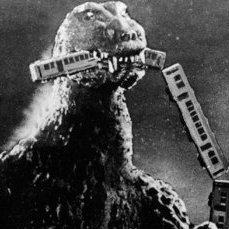
2025 SL Yamaguchi Schedule Posted
Mutro replied to Mutro's topic in Travel: Tips, Planning & Memories
SL Yamaguchi Trip Report 6 We crossed from Kyushu to Honshu via a pedestrian tunnel under the Straights of Kammon yesterday. This tunnel, which connects the cities of Shimonoseki and Mojiko, is bored under the sea just north of the Shinkansen tunnel and is accessed by 180’ deep elevators on each ends. Unfortunately, my friend dropped his iPhone as we entered the elevator and it slipped through the crack, dropping all the way down the 180’ shaft 🥺… But I digress. JR Mojiko Station Mojiko station is a Government Designated Important Cultural Asset, opened on February 1, 1914. The 2-story building constructed in the Renaissance style with high historical valuable is one of the oldest station buildings in Kyushu Kitakyushu Railway History Museum Nearby is the Kitakyushu Railway History Museum, a great find for any railway enthusiast. It’s small but a real gem, showcasing several restored locomotives and railroad memorabilia. There are a couple of nice model railroad layouts in N and HO as well as a well-stocked omiyage / railway nicknack store. Following descriptions by the museum Japanese National Railways No. 59634 First year of manufacture1922 Production company etc.Kawasaki Shipyard The 9600 type was the first domestically produced freight locomotive, and 770 were made. It was used throughout Kyushu and was affectionately nicknamed Kyuroku. Its distinctive feature was the high car body height, due to the boiler being located above the driving wheels. This locomotive was transferred from the Yonesaka Line to the Gotoji Locomotive Depot in 1974. Fans called this locomotive, which had come all the way from afar, "Thank you for your hard work," because of its number. It worked in the Chikuho region for less than a year, but it was one of the last steam locomotives in the Kitakyushu region. Japanese National Railway C59 No. 1 First year of manufacture1941 It was born as the main locomotive on the Tokaido and Sanyo main lines. It was assigned to Moji in 1956 and used for the sleeper express "Asakaze" and the express "Unzen", and in 1962 it was transferred to Kumamoto. It also pulled Kumamoto's first express "Mizuho", which was launched that same year. When the electrification of Kumamoto was completed in 1965, it was scrapped as it had no other place to be transferred to due to its heavy axle load for main line use. Nine cars of the same model were dismantled, but this car was kept on display at Kokura Factory as a quasi-railway monument. It had traveled the equivalent of 62 times around the earth before being scrapped. Japanese National Railways Kuha 481 No. 603 First year of manufacture1969 Production company etc.Nippon Sharyo The 481 series, which can run on both AC and DC, is an advanced version of the electric express "Kodama" that appeared in 1958, and was born in conjunction with the electrification of Kumamoto. This car was born in 1969 as Kuro 481-5 and was active in the Tohoku region, but in 1983 it was assigned to the Kagoshima Depot, where it was converted into a regular seating car and its car number changed to Kuha 481-603. After being used as the express "Nichirin", "Kamome" and "Ariake" in Kyushu, it has been preserved at the Kokura Factory since 1997. Japanese National Railways ED72 No. 1 First year of manufacture1961 Production company etc.Toshiba It was introduced as an AC electric locomotive for use in the Kitakyushu electrification project. Since it had a heating boiler, it was characterized by its long car length and the presence of a middle bogie in the center where no power was transmitted. As heating was changed from steam to electricity and the boiler became unnecessary, it was no longer necessary to limit it to passenger use, and in its later years it was also used for freight trains. This vehicle was a prototype locomotive and is slightly different in style from other locomotives of the same type, but it was preserved at Oimatsu Park in Moji Ward, Kitakyushu City as Kyushu's first AC electric locomotive. Japanese National Railways Kiha 07 No. 41 First year of manufacture1937 Production company etc.Nippon Sharyo This is a typical pre-war mechanical (clutch-driven gear change) diesel railcar, and when the cars were coupled together, the drivers on both sides would signal to each other as they drove. In 1952, the gasoline engine was changed to a diesel engine. This car was allocated to Bungomori Locomotive Depot in 1957 and used on the Miyahara Line. It was retired in 1969 and was carefully stored at Bungomori Locomotive Depot and Oita Depot. This is the only car of its type manufactured before the war that has retained its original form. Japanese National Railways EF10 No. 35 First year of manufacture1941 Production company etc.Toshiba When the Kanmon Tunnel was opened in 1942, this section became the only electrified section, and an EF10-type DC electric locomotive was deployed specifically for the tunnel, with the locomotives being replaced at Shimonoseki and Moji. In 1961, the Kyushu side was electrified with 20,000 volts AC, and the Honshu side with 1,500 volts DC, and the role was handed over to dual-purpose locomotives. This locomotive was then used in various parts of Honshu until 1979, and after its retirement it was preserved in Moji Osato Park. Japanese National Railways Kuhane 581 No. 8 First year of manufacture1967 Production company etc.Hitachi, Ltd. It debuted as the world's first sleeper train express "Gekko". It is a convenient express train that can operate both day and night as a seated express train during the day. In 1970, the number of trains increased and it was used for express trains between Kansai and Kyushu, such as "Tsubame" and "Hato". In 1984, it was converted into a local train at Kokura Factory and reborn as the AC train 715 series (Kuha 7151), and was mainly used on the Nagasaki and Sasebo lines until 2000. After being scrapped, it was repainted in the express train livery it had when it was first introduced and was preserved at Kokura Factory. Series 14 Sleeper Car First year of manufacture1972 Production company etc.Nippon Vehicles The 14 Series 11 sleeper express train was manufactured by Nippon Sharyo in 1972 as the second generation sleeper express train. It began operation as a replacement for the 20 Series "Sakura" and "Mizuho". The preserved "Suhanef 14 Series 11" has a diesel engine under the floor, and can send electricity to five cars including the train itself. When it was manufactured, it was a three-tiered sleeper with a conductor's room, but in 1982, the sleepers were remodeled to two tiers. It was in service for a long time, but the sleeper express "Mizuho" was discontinued in 1994, the "Sakura" in 2005, and the "Fuji" and "Hayabusa" in 2009, and this was the last operation, but it was in service as a special train in Kyushu until 2010, and was preserved at the Kumamoto Vehicle Center after its retirement.- 20 replies
-
- 2
-

-
- sl
- sl yamaguchi
- (and 6 more)
-

Bill's Excellent Swiss Train & Tram Adventure
chadbag replied to bill937ca's topic in Travel: Tips, Planning & Memories
The one time I was in Basel I took a French train so ended up at the Basel SBB Bh. I was in Offenburg for a few hours and then took a train to Strasbourg / Straßburg and took the train from Strasbourg to Basel where I spent a few hours and then a train to Bern (actually Zollikofen). That's because that was my actual destination where I had a bed waiting and an early morning appointment the next day. This was all 35 years ago. So it was all loco hauled normal wagons back then. I'd love to go ride the rails in Switzerland and visit the various places. I've been in Zürich and/or Bern a few times but it was all back in the early 90s. I've gotten a bunch of late model Swiss locomotives plus the RhB stuff from KATO as well. So I need to go see the real ones. I'd like some of the IC/IR stuff but Euro models have gotten so €€€€ Thanks for the pics Bill -
Tony, with block wiring every block of track on the layout is controlled by a DPDT switch that switches the power to that block from cab A or B or off. Doesnt matter where the track block is on the layout, if it’s on the inside or outside loop, or in a siding or yard or which control panels the DPDT is on. Its simply all blocks are the same in their wiring with the track power feeds going to a DPDT that is connected to cab A and cab B to choose from. I think the cleanest option is to just split the control panels into two, one for the Upper side of the layout and the other for the Lower side of the layout. Basically the same block pattern as before but just split the end 180 curve blocks on each end into two 90 degree halves so one 90 can go into the upper and one into the lower control panel [yellow line shows the division of the upper and lower sides of the layout}. This lets you do full operations of the yard and sidings of each side easily. When you want to run trains around the two loop mainlines you will just have to set those mainline blocks to the desired cab on the appropriate block DPDTs on both of the control panels. But this is a lot easier than one mega control panel that your ill have to operate half the layout over your shoulder sort of in reverse, have a large and very deep control panel to have the full layout on it, and be a lot of wires in one control panel. Remember each red dot is a pair of insulated unijoiners to isolate both rails of each block. The green dots are power drops for each block [some blocks need more than one power drops due to length and/or crossovers and switches] with each dot having wires to each rail that then wires back to the center of its DPDT. All the blocks are wired the exactly the same no matter where they are on the layout on the inner loop, outer loop, siding or yard. cheers jeff
-

Bill's Excellent Swiss Train & Tram Adventure
bill937ca replied to bill937ca's topic in Travel: Tips, Planning & Memories
On the return trip from Basel I took the IR37 which was simply the first train I encoutered heading for Zurich. It takes a different route than the IR36 and the travel time is comparable. Photos are on arrival at Zurich and inside the lower level coach. -
Jeff Just one quick point question, as im looking at two control panels one either side of the layout, lets say cab A on the left and cab B on the right but yes wired together as you have shown, can i wire DPDT switches to cab A for that side of the layout keeping to the wiring instructions as we have discussed, but also do the same wiring DPDT switches to cab B for that side of the layout, so in fact we have a control panel and control in front or near each station or yard What im asking is for cab control to work do all the DPDT switches for block control have to be on the one power control Tony
-

Bill's Excellent Swiss Train & Tram Adventure
bill937ca replied to bill937ca's topic in Travel: Tips, Planning & Memories
Now the S-Bahn network. There are 32 lines in the Zurich S-Bahn network. Of those 32 lines 31 run through Zuirch's main station. The S-Bahn will get you to work, take you to or from the airport. All services operate every 30 minutes with some lines doubling up for 15 minute frequencies. There is also the Forchbahn interurban lines S18 which is part of the S-Bahn network. https://en.wikipedia.org/wiki/Zurich_S-Bahn These trains in the photos are RABe 514 double deck commuter sets. There are 74 first class seats, 304 second class seats in a 100 meter four-car train. These sets are frequently doubled up. S-Bahn sets are red and white with blue roofs. The lower level of one of cars of each set has a very generous provision for baby carriages and bicycles. https://en.wikipedia.org/wiki/SBB_RABe_514 The photos were taken at Zürich Tiefenbrunnen, Bahnhof at the south end of the VBZ tram and trolleybus network on the east shore of Lake Zurich. -
Here is his video about his stay at a hotel in Ozu: https://www.youtube.com/watch?v=2ldQtkiYBCk Ciao, Tony


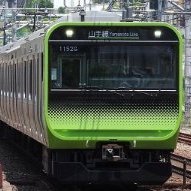

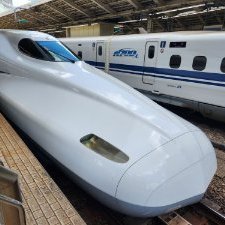
.thumb.jpg.9e3d5ff269f7dfb048f248793ba41546.jpg)
.thumb.jpg.84dcd27f3059e859c9c65dfa3aa76606.jpg)


.thumb.jpg.766d84585602ce1bcdac7e06d6890576.jpg)































